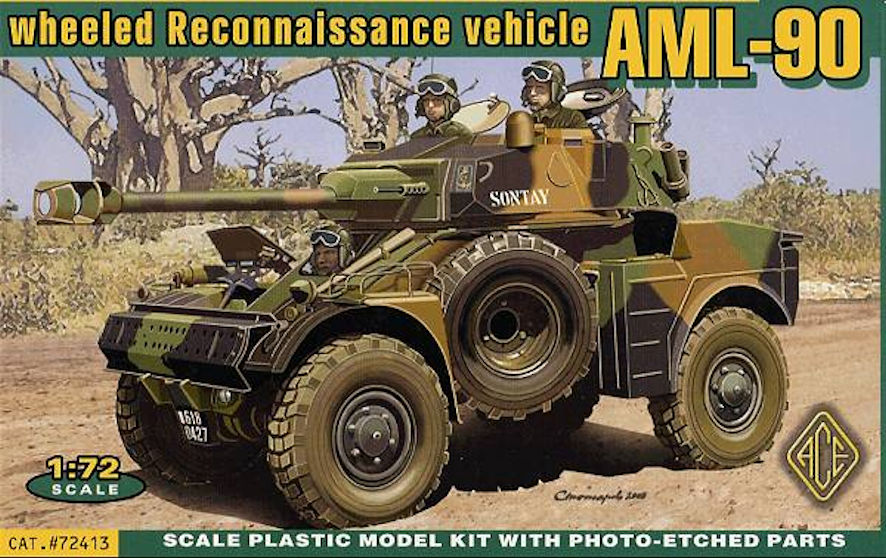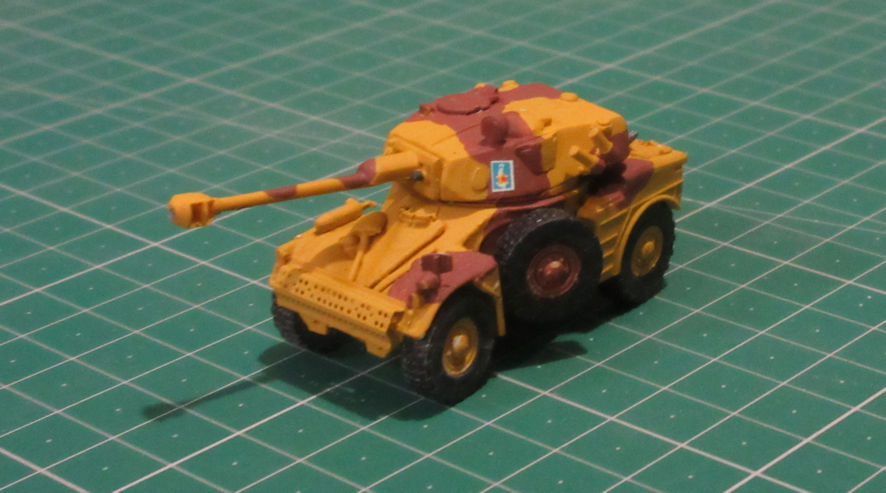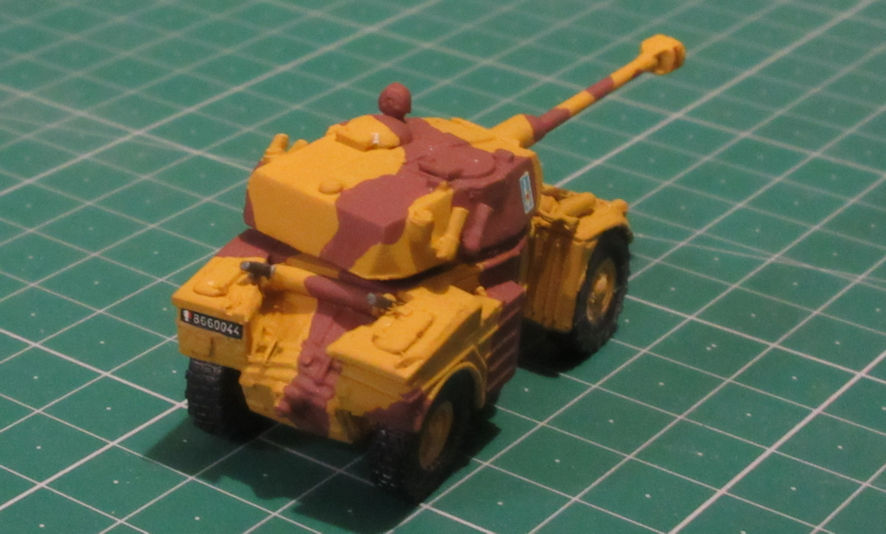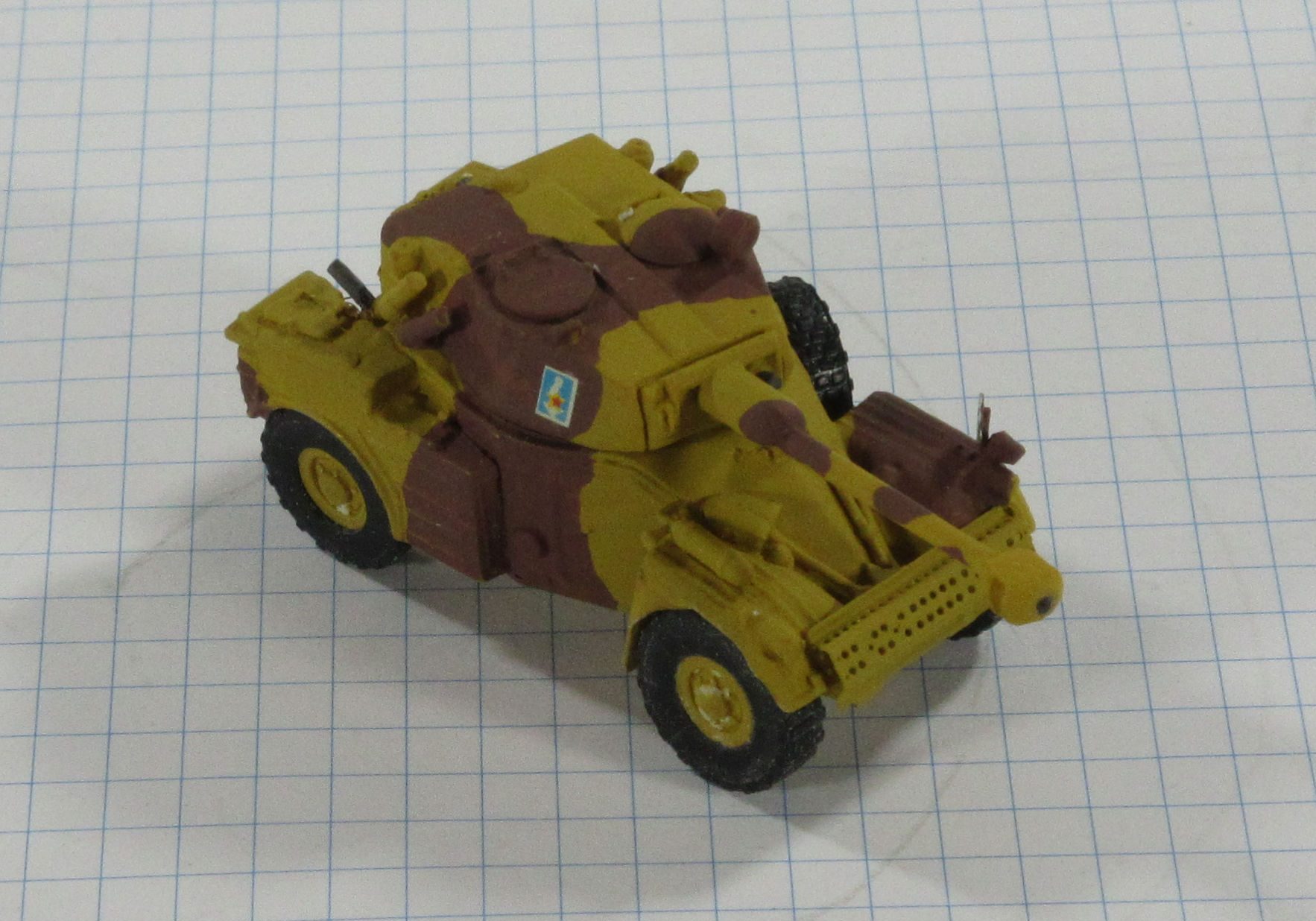After World War II and into the 1950s the French Army used large numbers of British Daimler Ferret armoured cars in North Africa. It decided to acquire similar vehicles with a wider range of armament and, after testing prototypes, selected the design from Panhard.
Production of the Automitrailleuse Légère (AML) commenced in 1960 and since then around 6000 have been manufactured in a range of versions. Production included 1300 manufactured in South Africa for the South African Army, which calls it the Eland, and it has become one of the most successful wheeled AFVs of the post war period.
The AML shared 95 per cent of its automotive components with the Panhard M3 armoured personnel carrier so that many counties operated fleets of M3s and AMLs, giving financial, logistic and training advantages.
All variants of the AML have the same layout with a driver in the front, a two man turret and engines and transmission in the rear. One major version is the H 60 which incorporates a 60mm breech loading mortar mounted in the turret along with other armament combinations including 7.62 and 12.7 mm machine guns and a 20mm cannon. An export version offers a twin 20mm cannon anti-aircraft turret. One of the most common versions is the AML-90 that has a two-man turret armed with a low pressure 90mm cannon firing HEAT, HE, smoke and canister rounds. The HEAT round is capable of penetrating 320mm (12.6in) of armour. More recent scout car versions have various combinations of 7.62mm and 12.7 mm machine guns that have a lower profile and less weight than the AML-90 and are well suited to the light reconaissance role.
AMLs have served around the world in about 30 nations; mainly in second and third world nations in Africa and Central and South America where they are used as reconaissance and internal security roles. Some armies use them as their primary armoured vehicle in place of tanks. France used the AML widely up until the mid 1990s although some remain in service in UN peace keeping roles. The South African army used them against Cuban forces during the Angolan War.

Here’s another of those kits from eastern Europe manufacturers – in this case Ukranian – who have given us such a diversity of kits in the past few years. Like many kits from this area there is a certain robustness to the kit parts so they are not as crisp as kits from the big manufacturers like Revell and Italeri. Parts don’t always fit as sweetly as you would like so there always seems to be a little bit of trimming here or there to get a satisfactory.
I don’t make too many AFV kits so I’m not used to the little idiosyncrasies of various kit makers. However, this Ace kit reminds me of the aeroplane kits made by Amodel. You get lots of detail and more than adequate parts, but sometimes it seems the kit has been made unnecessarily difficult for the sake of adding more pieces that could have just as easily been included on a bigger part. That aside, once I’d taken the knife to pieces, most of them fitted very nicely and some of the complexities in the parts turned out to be so the model would catch some of the subtleties of the real AML-90. The rear hull is an example, with parts that seemed, at first, very ill fitting but captured the shape very nicely when everything fell into place.
I did have a couple of complaints – what would be the point of this without them. The most tedious is that the parts on the sprues don’t have numbers, you have to turn back to the front page for the key of parts, and you get sick of that after a while. Some of the sprues have parts for other versions of the AML so there are parts that don’t go on this kit. While the diagram on the front page has a cross through some of the parts that are not to be used there are almost as many parts that are supposed to go with this kit but don’t seem to have a place when you study the exploded diagrams to see where they go. After spending a lot of time going over the diagrams trying to find where some parts were supposed to go I gave up and discarded them. The model doesn’t seem any poorer for it.
Apart from the need to carefully test fit all the parts before gluing them in place there is nothing terribly difficult about this kit. That’s understandable since this is basically the kit of a a metal box on wheels. The instructions are not very accurate when it comes to telling you where bits go but there were a couple of good web sites with excellent photos of AML-90s that I used as a guide instead. There is a very nice fret of brass bits to add some detail and a nice little decal sheet.
You get five colour options, three French and one each for the Arab Emirates and Djibouti armies. I chose one of the French schemes, obviously. On went the two colours, the decals and a nice matt coat to settle everything down. All the pictures I could find showed fairly tidy and clean looking vehicles so I didn’t go in for any of the usual weathering and messing up.
The last part of the business was to attach the wheels. You get five nice little rubber wheels to go onto hubs, which might be fine in theory but, in reality, the little rubber wheels look a lot less like the real thing than plastic ones would have.
And, at this point, I came to the most difficult part of the project. Since I’m new to this kind of thing I studiously followed the instruction in relation to the wheel hubs and axles that is set out fairly explicitly on the instruction sheet. But when I tried to fit the wheels they jutted out two or three millimetres beyond the mudguards. Do people just make up instruction sheets in the hope that the kit will go together the way they would like, or are they playing a cruel trick on those of us who actually read their instruction sheets? I tried fiddling with the parts, I tried trimming them, I tried harsh language and I tried naked threats and brute force. None of them worked. In the end I cut off the axles as far back as I could and stuck the wheels to them with lots of superglue. The ones that worked the best were the ones where the glue got onto the wheel that then stuck rather nicely to the tops of the wheel wells. The results don’t look too bad.
I see that Ace have also released an AML-60 and a Panhard M3 and that they are available on the NKR web site. The AML-90 looks so pretty that I’m tempted to get them, but still fresh memories of battling with various parts of this kit make me hesitant. Perhaps I’ll forget about those problems in due course…


Leigh Edmonds
October 2006
